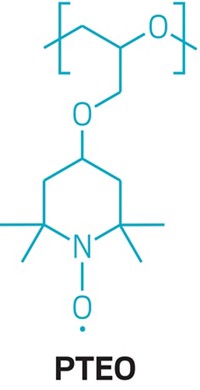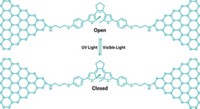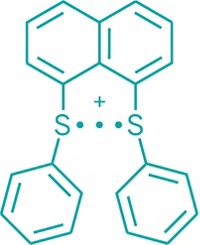Advertisement
Grab your lab coat. Let's get started
Welcome!
Welcome!
Create an account below to get 6 C&EN articles per month, receive newsletters and more - all free.
It seems this is your first time logging in online. Please enter the following information to continue.
As an ACS member you automatically get access to this site. All we need is few more details to create your reading experience.
Not you? Sign in with a different account.
Not you? Sign in with a different account.
ERROR 1
ERROR 1
ERROR 2
ERROR 2
ERROR 2
ERROR 2
ERROR 2
Password and Confirm password must match.
If you have an ACS member number, please enter it here so we can link this account to your membership. (optional)
ERROR 2
ACS values your privacy. By submitting your information, you are gaining access to C&EN and subscribing to our weekly newsletter. We use the information you provide to make your reading experience better, and we will never sell your data to third party members.
Materials
Organic Crystals Light Up
Materials: Compounds use halogen bonds for metal-free phosphorescence
by Jyllian N. Kemsley
February 14, 2011
| A version of this story appeared in
Volume 89, Issue 7

Phosphorescent organic crystals can be chemically tuned to glow in different colors without the need for metals, researchers from the University of Michigan report (Nat. Chem., DOI: 10.1038/nchem.984).
“Traditionally, purely organic materials have been widely considered to be nonphosphorescent,” says Wai-Yeung Wong, a chemistry professor and member of the Centre for Advanced Luminescence Materials at Hong Kong Baptist University. The new organic crystals offer a simple, low-cost approach to activating solid-state phosphorescence at room temperature, Wong adds.
Phosphorescence is similar to fluorescence in that a substance absorbs and then reemits electromagnetic radiation. In phosphorescence, however, the excited electron flips its spin, making quantum mechanically forbidden transitions. Such transitions are easier in inorganic or organometallic compounds. Phosphorescent materials in applications such as light-emitting diodes or sensors are typically made from organometallic compounds incorporating precious metals such as iridium.
Michigan materials science professor Jinsang Kim and colleagues instead designed a molecule, 2,5-dihexyloxy-4-bromobenzaldehyde, that incorporates both an aromatic carbonyl group and a bromine atom. In solution, the molecules are weakly fluorescent. When they crystallize, however, halogen bonds—noncovalent interactions akin to hydrogen bonds—form between the bromine of one molecule and the aldehyde oxygen of another. The arrangement promotes the spin-flipping transitions and results in crystals that glow green.
The phosphorescence can be enhanced by diluting the bromobenzaldehyde crystals with a dibromobenzene analog, which helps shut down self-quenching pathways but still makes plenty of bromine atoms available for halogen bonds to aldehyde groups.
Kim and coworkers were also able to tune the phosphorescence color by altering the structure of the molecule. Exchanging the alkoxy arms for alkyl or thioether groups produced blue or yellow-green phosphorescence, respectively. Replacing the central benzene ring with a naphthyl core yielded dark-orange phosphorescence.






Join the conversation
Contact the reporter
Submit a Letter to the Editor for publication
Engage with us on Twitter